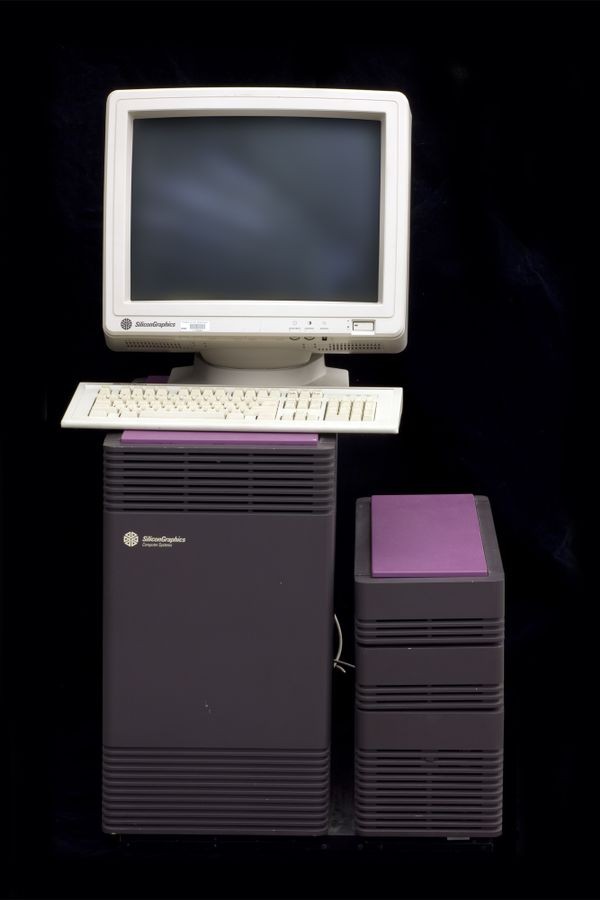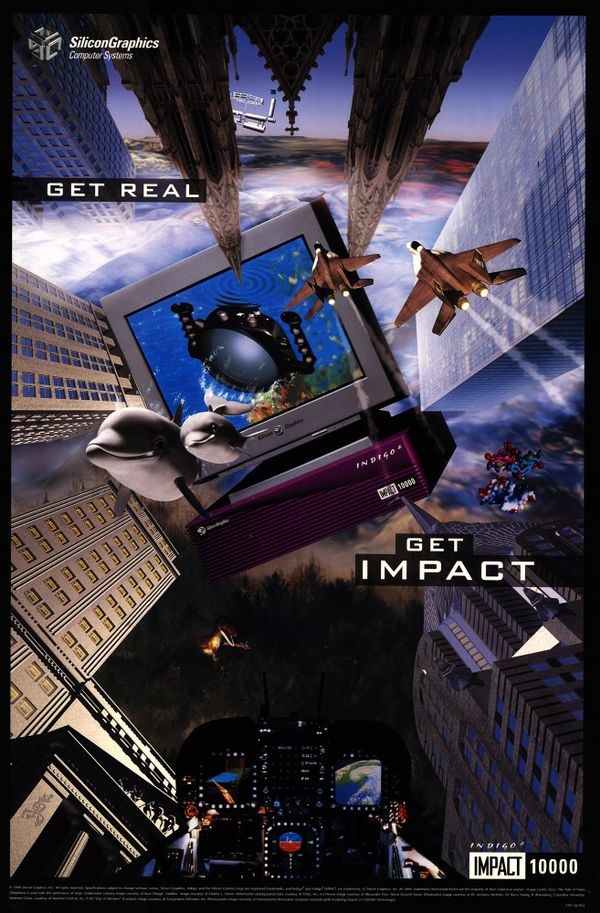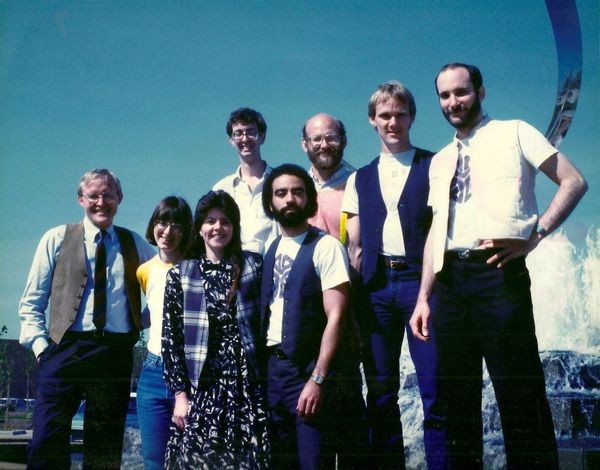Silicon Graphics
Silicon Graphics Professional IRIS Indigo workstation ad
The Indigo machines were among the fastest for rendering 3D images.
Silicon Graphics
Industrial designers, medical and scientific companies, and film production houses used digital imaging to expand the boundaries of their work in the 1980s and 1990s. And the digital imaging equipment they relied on frequently bore the logo of Silicon Graphics.
Founded in 1982 by Stanford professor James Clark, with seven graduate students and staff from Stanford, Silicon Graphics launched its first graphics terminal in 1984. It was based on the Geometry Engine, a powerful processor for displaying graphics rapidly. The company’s expanding hardware line eventually spanned personal workstations to supercomputers.
Silicon Graphics Professional IRIS 4D/50GT
For Silicon Graphics, the Iris 4D series marked a shift from Motorola microprocessors to RISC ("reduced instruction set computing") processors built by MIPS Technologies, Inc. Five years later, in 1992, SGI acquired MIPS for $333M. But in 1998 it abandoned MIPS processors in favor of Intel’s Itanium.
View Artifact DetailSilicon Graphics Indigo² Impact 10000 advertisement
SGI’s Indigo machines were powerful workstations that were also less-expensive than other systems with similar capabilities.
View Artifact DetailEarly Silicon Graphics employee photo
Stanford professor James Clark, left, co-founded SGI, which produced graphic display terminals and, later, complete workstations. Shown with Clark are (left to right) Marcia Allen, Diane Wilford, Kurt Akeley, Marc Hannah, Tom Davis, Rocky Rhodes and Mark Grossman.
View Artifact Detail


